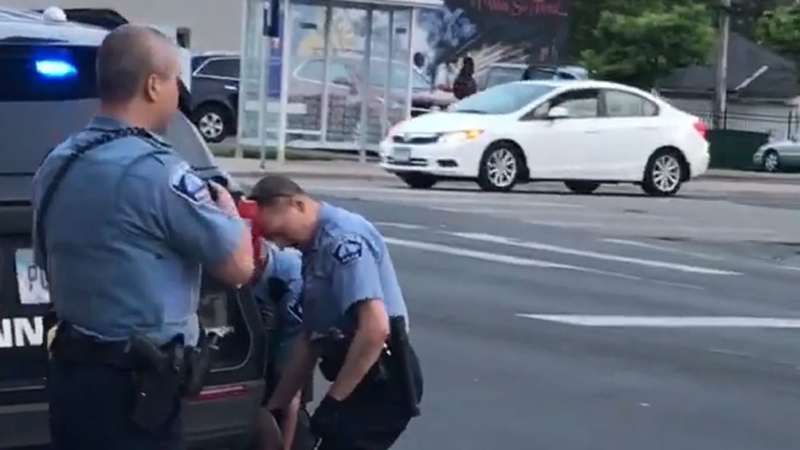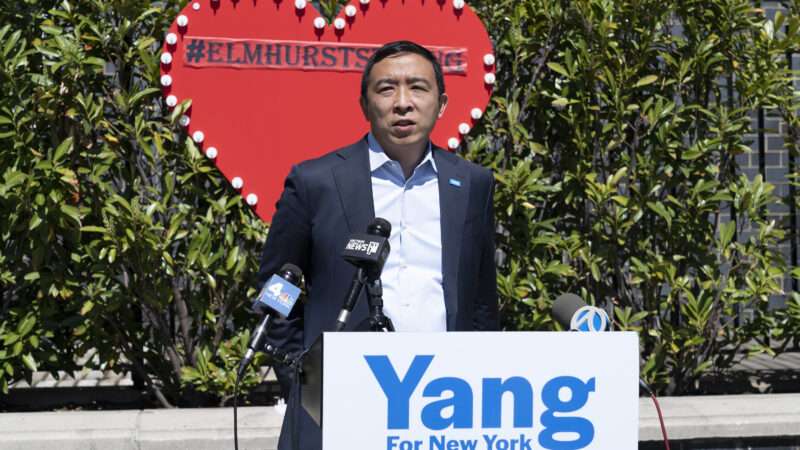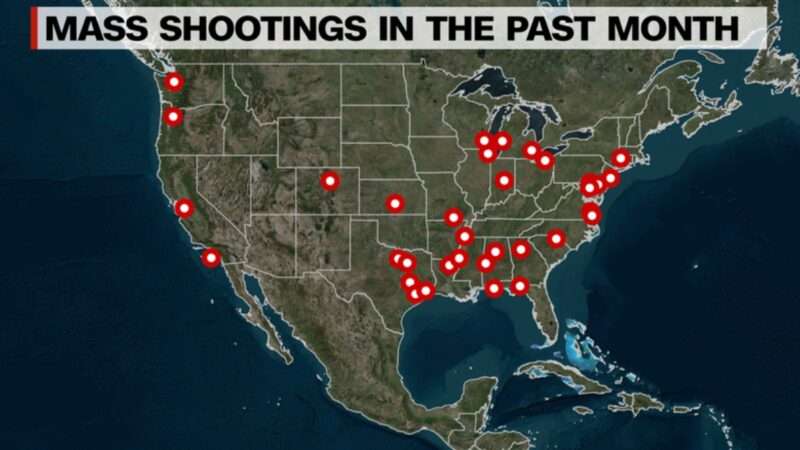Mass public shootings are horrifying, seemingly random events with high casualty counts, and for that reason they attract much more press and political attention than far more common kinds of lethal violence, even though they account for a tiny percentage of homicides and gun deaths. A new analysis by RAND Corporation economist Rosanna Smart and senior behavioral scientist Terry Schell calls attention to some of the ways in which the disproportionate emphasis on crimes like the recent massacres in Atlanta, Boulder, and Indianapolis distorts and confuses the debate about gun control.
Research on mass shootings in the United States begins with the problem of defining them. Seven databases that Smart and Schell discuss use seven different definitions based on five different casualty thresholds, all of which consider the number of people killed and some of which also consider nonfatal injuries or the killer’s motivation. Smart and Schell note that “using definitions that differ in their thresholds for the number and type of victims or the circumstances around the incident results in vastly different estimates of how often mass shooting events occur, how the rate has changed over time, and incident characteristics.”
Based on the narrowest definition considered by Smart and Schell—which requires four fatalities aside from the perpetrator and excludes armed robbery, gang violence, and domestic violence—there were six mass shootings in 2019. Based on the broadest definition—four people injured or killed, including the perpetrator—there were 503.
The wide range of definitions means that people are often talking about different things when they talk about mass shootings. After last week’s attack in Indianapolis, for example, CNN created a graphic that indicated the U.S. had seen 22 “mass shootings in the past month.” California Gov. Gavin Newsom tweeted that graphic with the comment, “What ‘getting back to normal’ in America means after a pandemic.” A different CNN tally upped the number of “mass shootings” since mid-March to “at least 45,” based on a definition that covers incidents in which “four or more people are shot, wounded, or killed.”
CNN’s count includes many crimes that do not fit the stricter definitions and do not jibe with what most people probably imagine when they hear the phrase mass shooting. For example, CNN counted a robbery-related shooting at a motel in Gresham, Oregon, that injured four people but killed no one; a drive-by shooting in Stockton, California, that caused five nonfatal injuries; an argument-related shooting at a Dallas nightclub that killed one person and injured seven others; and a shooting outside a sports bar in Philadelphia that injured seven people after “an altercation inside the venue.”
CNN’s definition is defensible for some purposes. But by presenting this tally in the context of the April 15 attack at a Federal Express sorting facility in Indianapolis, which killed nine people, CNN left the misleading impression that 44 similar crimes had occurred in the previous month. In reality, three of those shootings resembled the Indianapolis attack, meaning that they killed four or more people at random in a public place.
Definitions are also crucial when considering trends in mass shootings. “The data from multiple studies suggest a slight increase in the incidence rate of mass public shootings over the past four decades,” Smart and Schell write. “From 2016 to 2018, the annual rate of mass public shooting incidents was about one incident per 50 million people in the United States [based on data collected by criminologist Grant Duwe]. Considering the number of fatalities in these shootings, this corresponds to approximately 0.4 percent of all homicides, or approximately 0.2 percent of all firearm deaths, over that period.”
Meanwhile, “using an expanded definition of mass shootings that includes domestic- or felony-related killings, there is little evidence to suggest that mass shooting incidents or fatalities have increased.” If news outlets like CNN use a consistent definition, in other words, they cannot reasonably assert that mass shootings are on the rise while simultaneously claiming that “at least 45” happened between mid-March and mid-April.
Another complication in trying to figure out whether mass shootings have become more common is that information about recent crimes is more accessible than information about older crimes, a bias that may create the illusion of an upward trend. “Because it should be relatively easier to identify more-recent shootings with few fatalities, a low casualty threshold will tend to systematically bias estimates of the number of shootings upward over time,” Smart and Schell note. “Even when using a higher-fatality threshold, mass shooting data sources that rely solely on news reports to identify cases also appear to systematically undercount incidents from earlier periods.”
Policies that aim to prevent mass public shootings, such as expanded background checks and “red flag” laws, often focus on stopping would-be perpetrators from obtaining firearms. But those policies are based on the mistaken premise that people inclined to commit mass murder can be distinguished from millions of other people with similar traits.
“Even if we did have definitive and complete data sources on the characteristics of all mass shooting incidents, it is still likely to be exceedingly difficult to identify useful predictors of mass shootings,” Smart and Schell write. “With the exception of male sex, risk factors that appear to be overrepresented among mass shooters relative to the general population are often still uncommon among offenders on an absolute level. Thus, even if one could find a way to prevent individuals with a documented serious mental illness from committing a mass shooting…most mass shootings would still occur because only a fraction of mass shootings are committed by individuals with a documented history of serious mental illness.”
Another approach is restricting or banning firearms or accessories that are frequently used in mass shootings. But as Smart and Schell note, “handguns are the firearm most commonly involved in active shootings and mass shootings.” They are also the most common type of firearm used by ordinary criminals and the most common type used by law-abiding Americans for self-defense. For the latter reason, the Supreme Court has repeatedly said, handgun bans are unconstitutional.
Smart and Schell cite studies indicating that so-called assault weapons are used in 10 percent to 36 percent of mass shootings. Even if that percentage could be reduced, it is quite unlikely that the result would be fewer deaths, given the arbitrary nature of “assault weapon” bans, which leave would-be mass shooters with plenty of equally lethal alternatives.
Smart and Schell note that “the use of large-capacity magazines (LCMs)”—defined as magazines that hold more than 10 rounds, which are standard for many of the most popular guns sold in the U.S.—”is more common in mass public shootings and high-fatality mass shooting incidents than it is in firearm crimes overall.” They say “descriptive evidence that mass shootings involving firearms equipped with LCMs result in significantly higher injury and fatality rates may suggest potential benefits of restricting access to LCMs,” although “it may be that the choice to use LCMs reflects more-lethal intentions of the shooter.”
The rarity of mass public shootings makes it difficult to assess the impact of these or other policies. “Even if a state passed a policy that had large effects on mass public shootings (e.g., it cut the probability of such incidents in half), it is still unlikely that a study of that policy using appropriate statistical methods would find it to have a statistically significant effect,” Smart and Schell write. “This occurs because most states already have zero mass public shootings in any given year, and, when the rate in the pre-period was already at, or very close to, zero, it is not possible to detect a decline in the risk of such shootings that is due to the policy—no matter how large that effect may be. This pervasive lack of statistical power can result in a published literature characterized by exaggerated effect sizes for any effects that are found to be statistically significant, and these significant estimates, in many cases, may misidentify the direction of the true effect.”
Where does that leave us? Smart and Schell suggest that the focus on preventing this particular kind of homicide is misplaced.
“Precisely because mass shootings are so rare and it is so difficult to predict exactly who will perpetrate them, the overall costs and benefits of any policy to address them are likely to be driven by the policy’s effects on a broader set of far more-common outcomes, such as overall homicide, suicide, domestic violence, and population health,” they write. “Improved treatment for mental health problems or suicidality might reduce certain types of mass shootings, but such policies may also reduce far more-common forms of homicide, suicide, and crime and may also improve economic productivity and social well-being. Similarly, policies aimed at reducing domestic violence or preventing crime are worth pursuing for those benefits, and they may also reduce the incidence of some types of mass shootings (i.e., familicides [and] felony-related killings). Focusing efforts on implementing public policies that reduce violence more broadly, rather than making policy decisions based only on the most-extreme forms of such violence, may not eliminate mass shootings but may reduce their occurrence and lethality and ultimately save more lives.”

from Latest – Reason.com https://ift.tt/3sJubNp
via IFTTT




